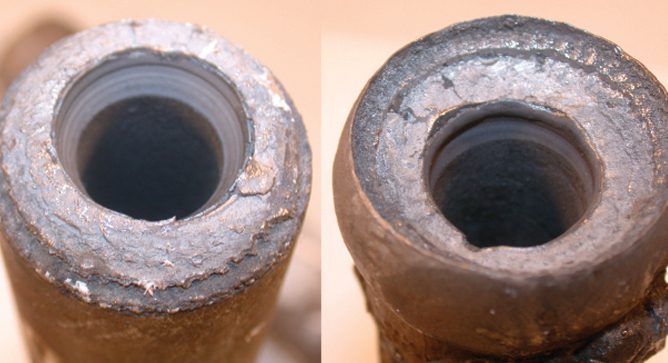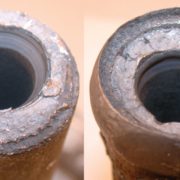News & Views, Volume 43 | Metallurgical Lab Featured Damage Mechanism: Failure of Dissimilar Metal Welds (DMW) in Steam-Cooled Boiler Tubes
By: Wendy Weiss

Background
The welds made between austenitic stainless steel tubing and the lower-alloyed ferritic grades of tubing (T11, T22) deserve special mention because of the early failures that developed in some of these dissimilar metal welds (DMWs) soon after their introduction in superheater and reheater assemblies. Prior to the mid-1970s, many DMWs were fabricated either as standard fusion welds using an austenitic stainless filler metal, such as TP308, or as induction pressure welds, in which the tubes were fused directly to each other without the addition of filler metal. Some of these welds failed after less than 40,000 hours of operation, with the earliest failures being associated with DMWs that operated “hot” in units that cycled heavily and were subjected to bending stresses during operation.
After the mid-1970s, and in response to extensive research carried out by EPRI and other organizations, an increasing number of DMWs in superheater and reheater tubes were fabricated as fusion welds using nickel-based filler metals, such as the INCO A, INCO 82, INCO 182, etc.


